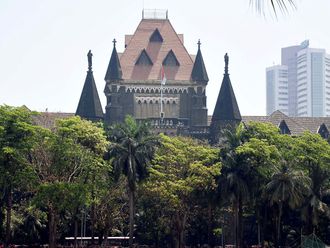New York: When Diana Valle decided to intern at a bankruptcy firm during law school, she had no idea how useful the experience would prove — in her own case.
Shortly before graduating from the University of Maryland School of Law, the 26-year-old Valle, burdened with $150,000 (Dh550,500) in student debt and with no immediate job prospects, filed for Chapter 7 personal bankruptcy protection.
"I was really thinking it would be much easier to get a job," said Valle, who now lives with her mother and recently landed legal contract work through a temp agency. "I knew it was bad, but I didn't think it would be this bad."
Valle, who represented herself, found out the hard way that federal law prohibits courts from discharging student-loan debt except in cases where repayment would create a so-called "undue hardship" on the debtor — a difficult standard to meet.
It's a sad irony of the Great Recession: Law students are borrowing an average of $106,000 for private schools or $70,000 for public schools at a time when there are fewer legal jobs to help them pay off the loans. And that's brought a rise in defaults, leaving some like Diana Valle turning to the courts to help them cope with huge debt loads.
Although no definitive data tracks how many law-school students and recent graduates have declared bankruptcy, observers say law graduates face a "perfect storm" in which average law-school debt is up 50 per cent between 2001 and 2010 and is now outpacing graduates' earning power .
"If you did not go to a top 40 law school and finished in the top 25 per cent of your class, you're not going to get one of those jobs," said Jordan Abshire, principal of attorney recruiting agency Lateral Link. Abshire said that since 2008, he has seen more attorneys with a few years of experience filing for bankruptcy, often carrying a new home mortgage on top of their student loans. Bruce MacEwen, law firm consultant and president of JD Match, an online attorney job service, said he would be "shocked" if bankruptcy filings hadn't gone up among law graduates since 2008. He said the financial predicament for law graduates from lower tier schools is especially dire.
Defaults
"It's a tragedy," he said. For all types of student loans, which include undergraduate, graduate and professional students, defaults rose to 8.8 per cent in 2010 from 7 per cent in 2009 — the latest year that data was available from the US Department of Education.
Bankruptcy filings by college graduates also increased by 20 per cent between 2005 and 2010, according to 2011 findings by the Institute for Financial Literacy.
The debt load on stud-ents is made worse by the shrinking legal job market. Since January 1, 2008, major law firms have laid off about 5,900 attorneys, according to the Lay-Off tracker at lawshucks.com, a blog that tracks law firm hiring. That is about 5 per cent of all attorneys at the 250 largest law firms, according to the National Jaw Journal. (The US Department of Labour does not collect job data on attorneys specifically.)
For the first time, law school students graduating with the median amount of law school debt are unable to make ends meet if they make the median starting salary — about $63,000 in 2010 — said James Leipold, executive director of the National Association for Law Placement, at an attorney-recruiting conference in New York last month.
"There's a mismatch between the amounts law schools charge and the pay most graduates receive," Leipold said.
Default rate up
Consumer bankruptcies overall were actually down by 11 per cent in 2011, but several indicators, such as student-loan default rates, suggest that law students and graduates have not benefited from this trend.
At Access Group, one of the largest private lenders to law school students in the country, law-school loan defaults started rising in 2008 and peaked toward the end of 2010, when students were defaulting at twice the expected rate, according to president and CEO Christopher Chapman. He said default rates began a decline after that, but he acknowledged that Access has not issued any new student loans since March 2010.
—






